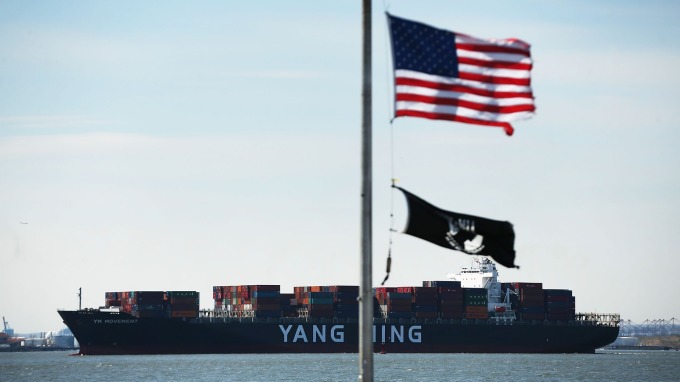Chin-Long Yang, the Chair of the Central Bank of Taiwan, made a speech at the seminar held by the Taiwan Academy of Banking and Finance today on January 4th, pointing out that the competition between the US and China in the high-tech field will become more intense. Taiwanese vendors should take this opportunity to strengthen the connection of US high-tech R&D advantage to accelerate the adjustments of their global supply chains and return to Taiwan to invest.
Regarding recent US-China trade war, Yang also stated that the tariffs and exchange rates are not a panacea for resolving trade imbalances. The US current account deficit mainly reflects the structural factors of insufficient domestic savings. The solution is that the United States should reduce consumption and increase savings.
Yang told that the United States faces structural problems such as huge trade surplus, the US dollar as the core international reserve currencies, the International division in the supply chain, and global financial integration. With unilateral tariff sanctions or exchange rate pressure, it is impossible to fundamentally solve the current account deficit. The solution should be reducing consumption and increasing savings.
Yang said that under the current international economic situation, global economic and trade activities and supply chain structure have begun to change. It is believed that the recent US-China trade war is only an appearance, and the deeper meaning is to reflect the rise of China. The United States and China turn from cooperation to competition. In the future, the competition between the two sides in the high-tech field will become more and more fierce.
Taiwan vendors face opportunities and challenges in global supply chain restructuring, due to the following: (a) Taiwan’s manufacturing industry’s production base is in China, (b) important source of high-tech key technologies comes from the United States, (c) both the United States and China are the most important partners in the industry for Taiwan.
The US sanctions against China’s high-tech players and the strict control of advanced technology outflows, will accelerate Taiwanese vendors’ adjustment of their supply chains. On the one hand, the vendors could move production bases to the United States, Southeast Asia or India. Or, they could still set production bases in China, and transformed into China domestic-oriented, localizing their procurement and R&D.
Yang emphasized that if the government continues to eliminate investment barriers and loosen regulations to attract taiwanese vendors to return to invest in Taiwan, the impact of US-China trade war can be transformed into a chance to increase the investment in Taiwan, turning the crisis into a turning point.
更多精彩內容請至 《鉅亨網》 連結>>
我是廣告 請繼續往下閱讀
Yang told that the United States faces structural problems such as huge trade surplus, the US dollar as the core international reserve currencies, the International division in the supply chain, and global financial integration. With unilateral tariff sanctions or exchange rate pressure, it is impossible to fundamentally solve the current account deficit. The solution should be reducing consumption and increasing savings.
Yang said that under the current international economic situation, global economic and trade activities and supply chain structure have begun to change. It is believed that the recent US-China trade war is only an appearance, and the deeper meaning is to reflect the rise of China. The United States and China turn from cooperation to competition. In the future, the competition between the two sides in the high-tech field will become more and more fierce.
Taiwan vendors face opportunities and challenges in global supply chain restructuring, due to the following: (a) Taiwan’s manufacturing industry’s production base is in China, (b) important source of high-tech key technologies comes from the United States, (c) both the United States and China are the most important partners in the industry for Taiwan.
The US sanctions against China’s high-tech players and the strict control of advanced technology outflows, will accelerate Taiwanese vendors’ adjustment of their supply chains. On the one hand, the vendors could move production bases to the United States, Southeast Asia or India. Or, they could still set production bases in China, and transformed into China domestic-oriented, localizing their procurement and R&D.
Yang emphasized that if the government continues to eliminate investment barriers and loosen regulations to attract taiwanese vendors to return to invest in Taiwan, the impact of US-China trade war can be transformed into a chance to increase the investment in Taiwan, turning the crisis into a turning point.
更多精彩內容請至 《鉅亨網》 連結>>



